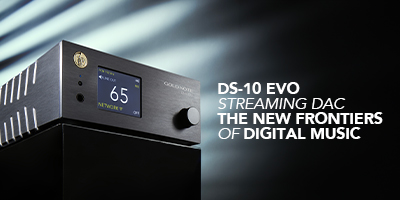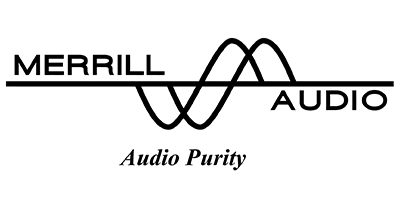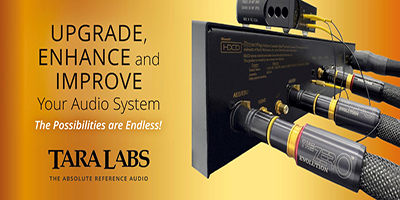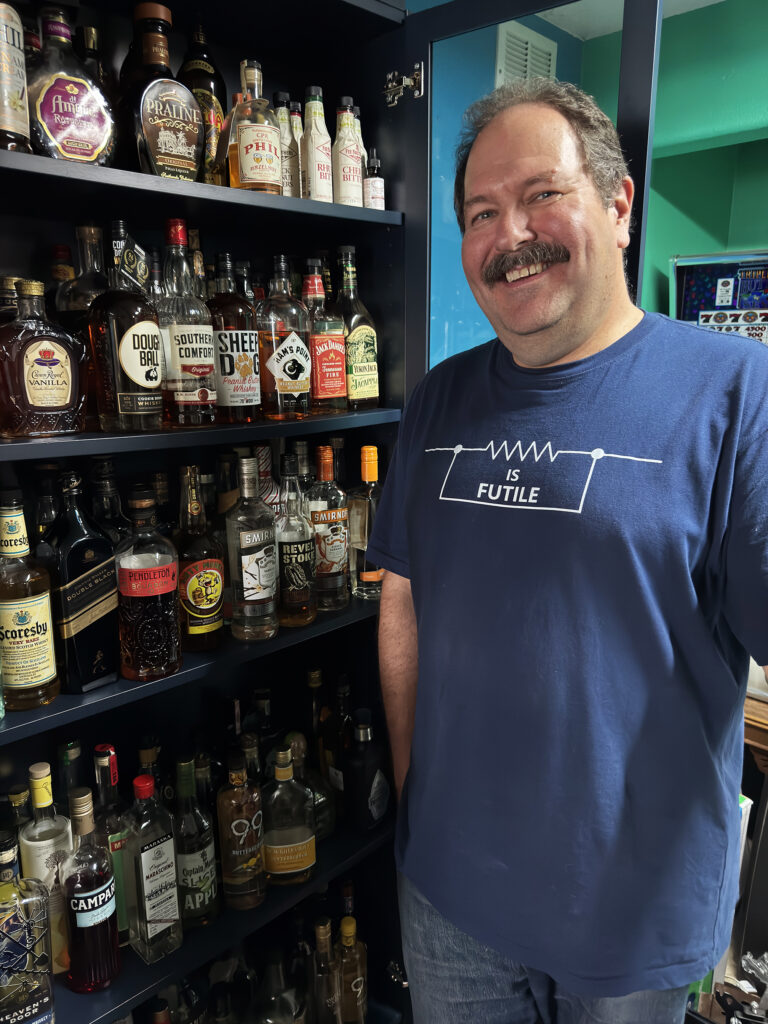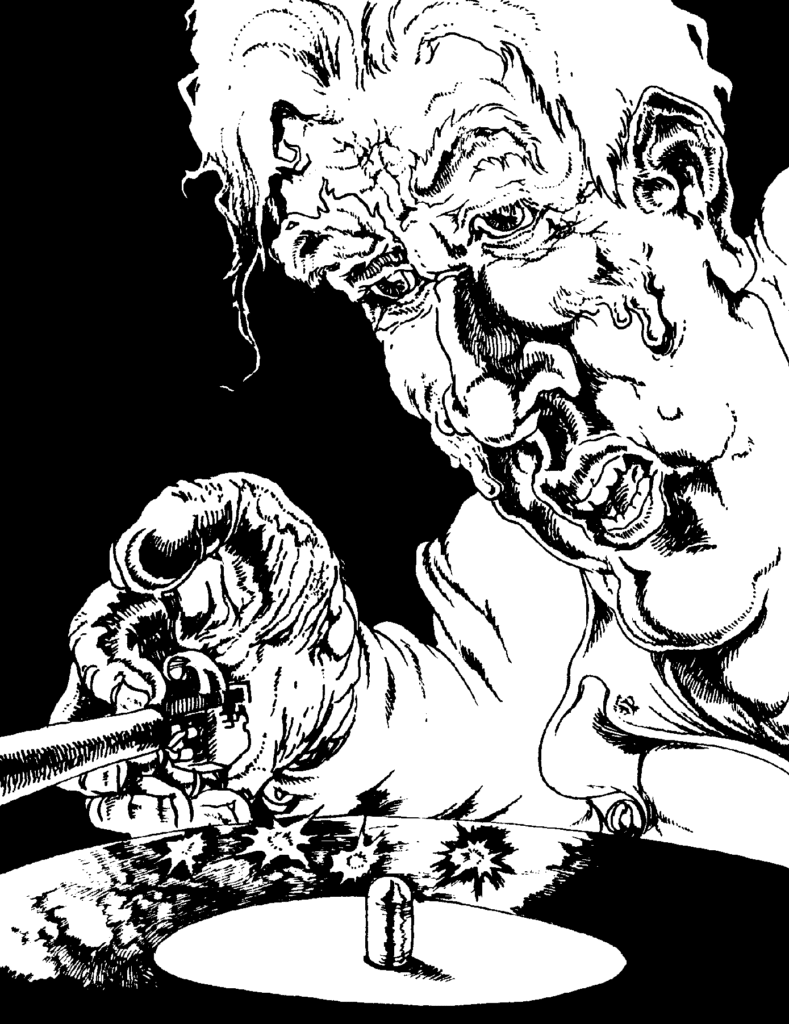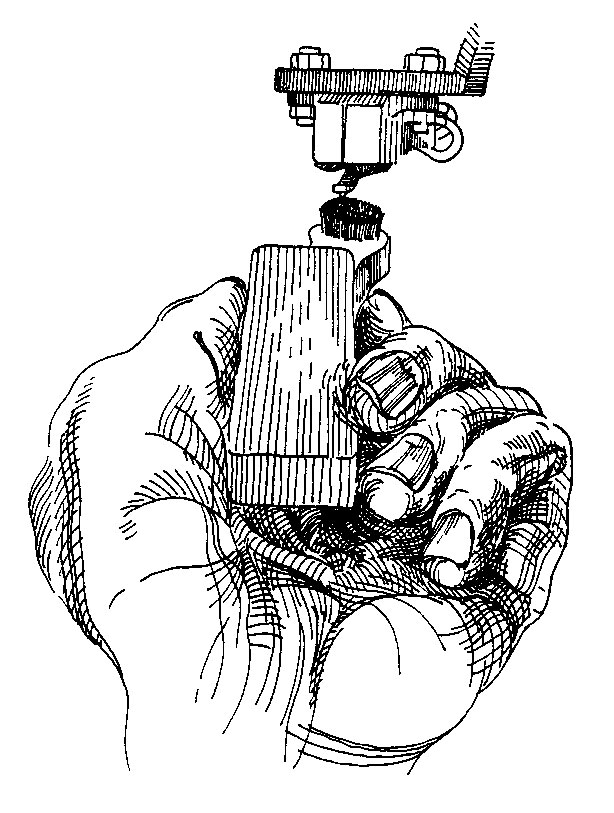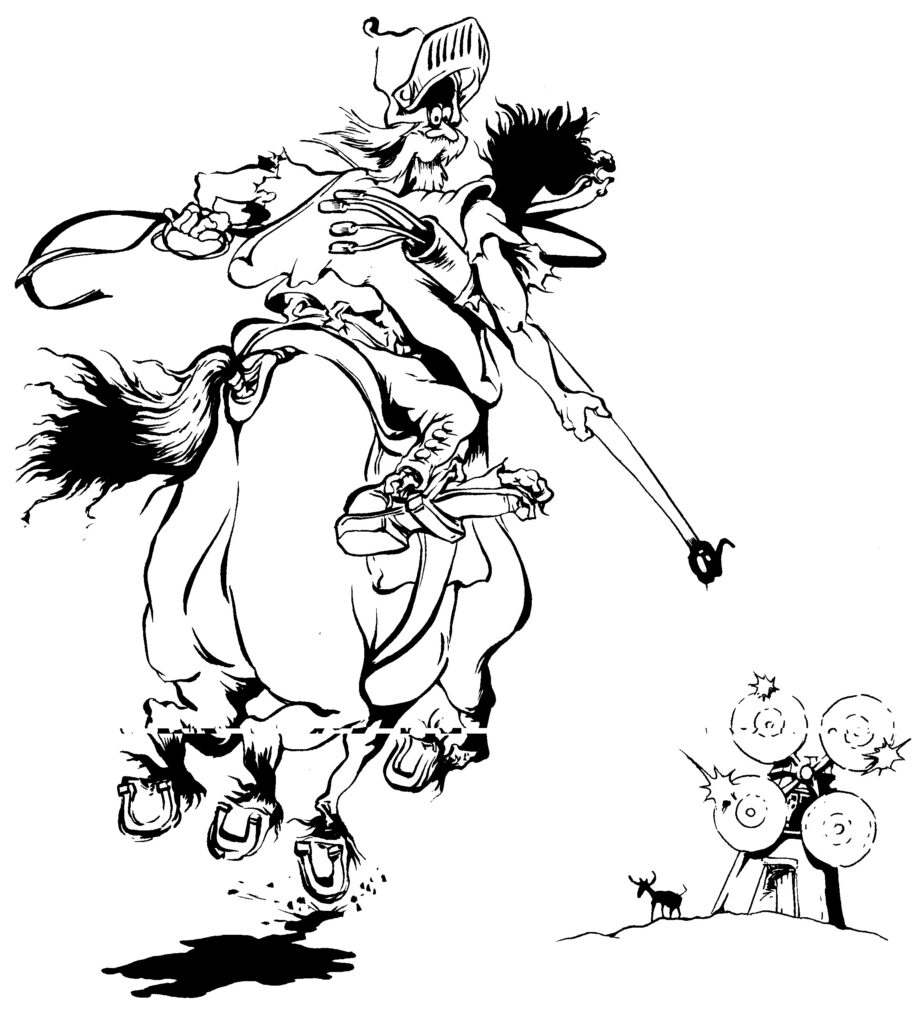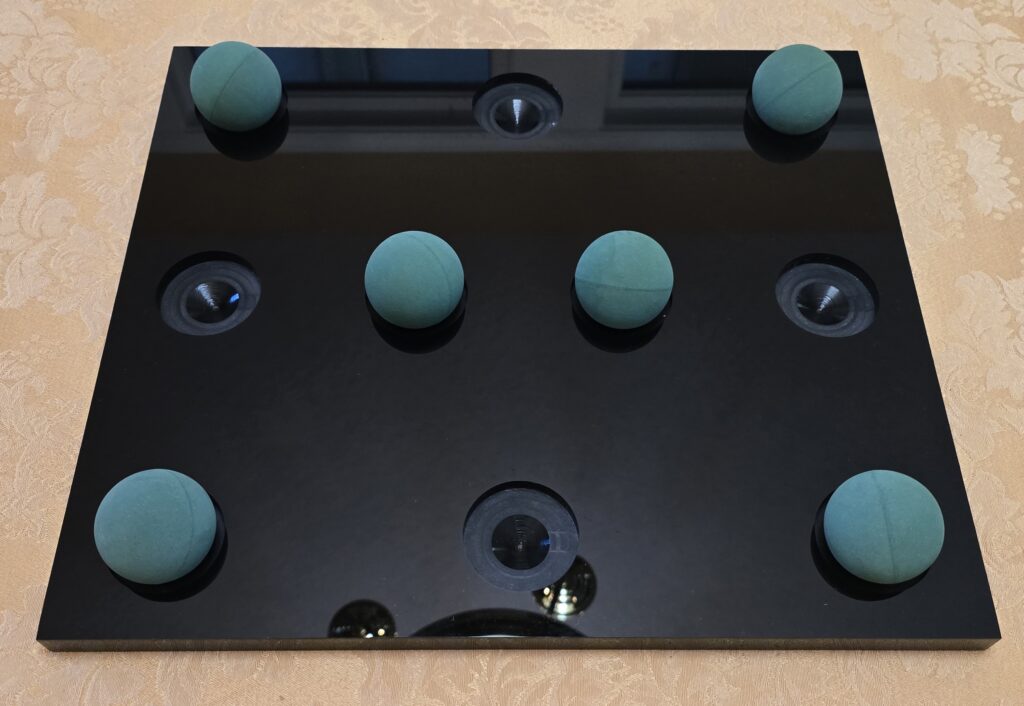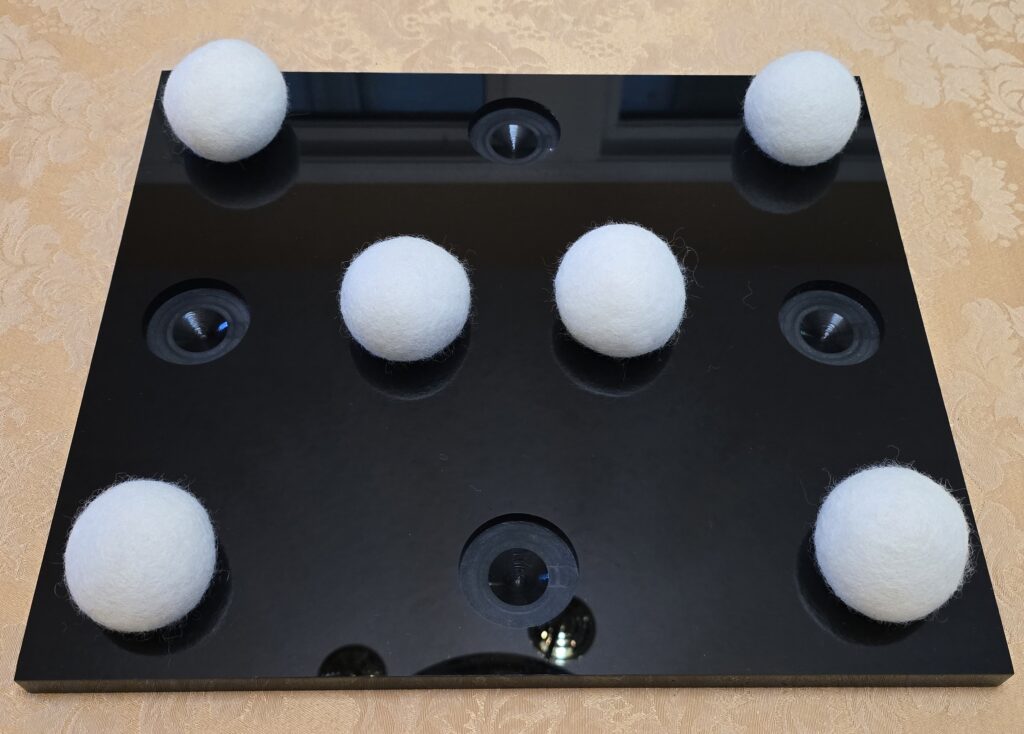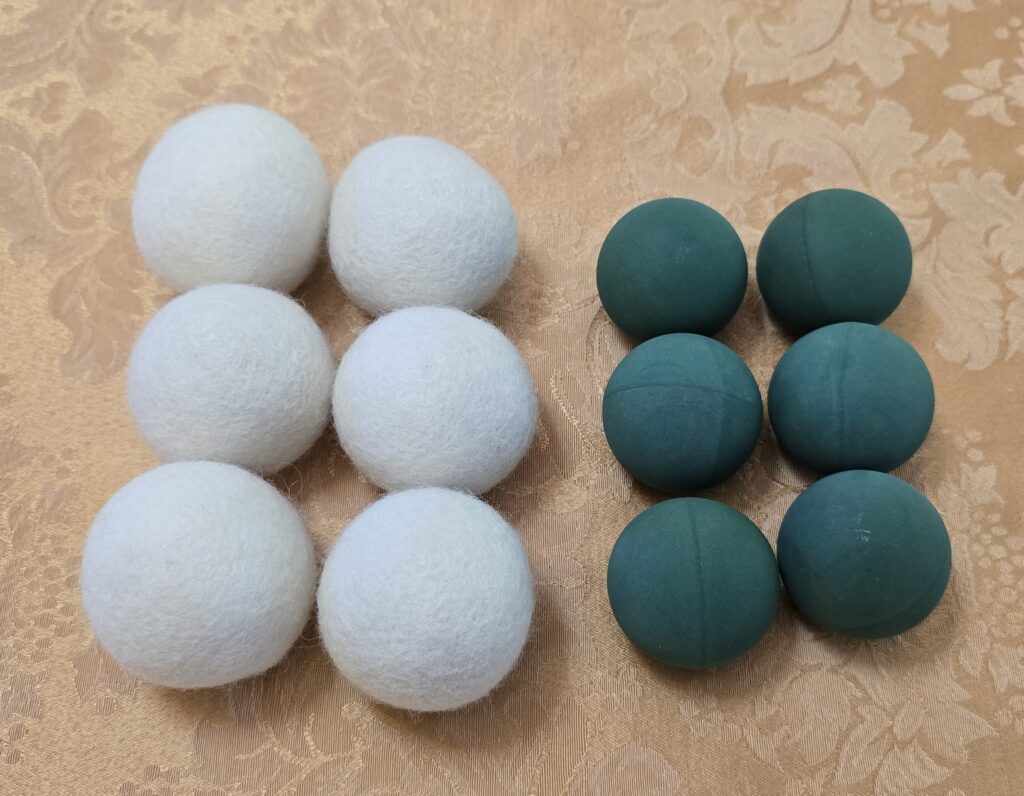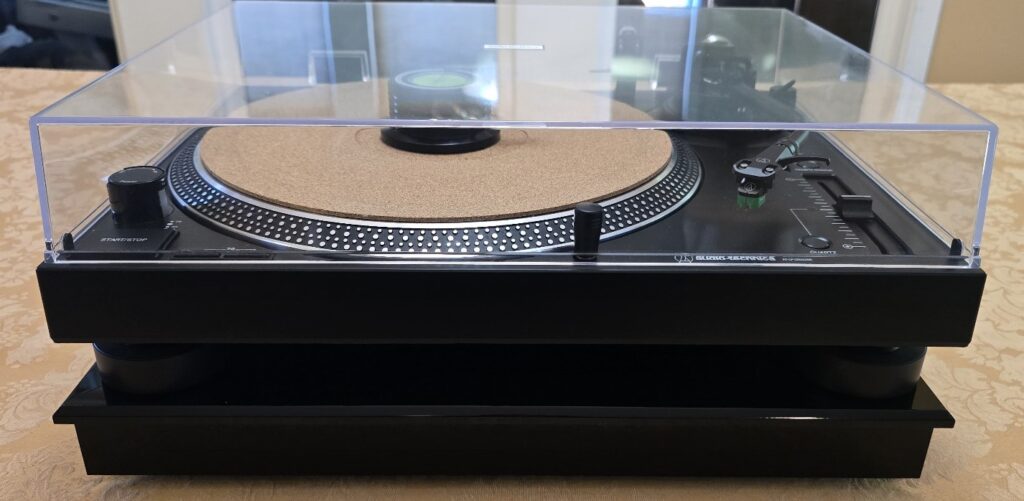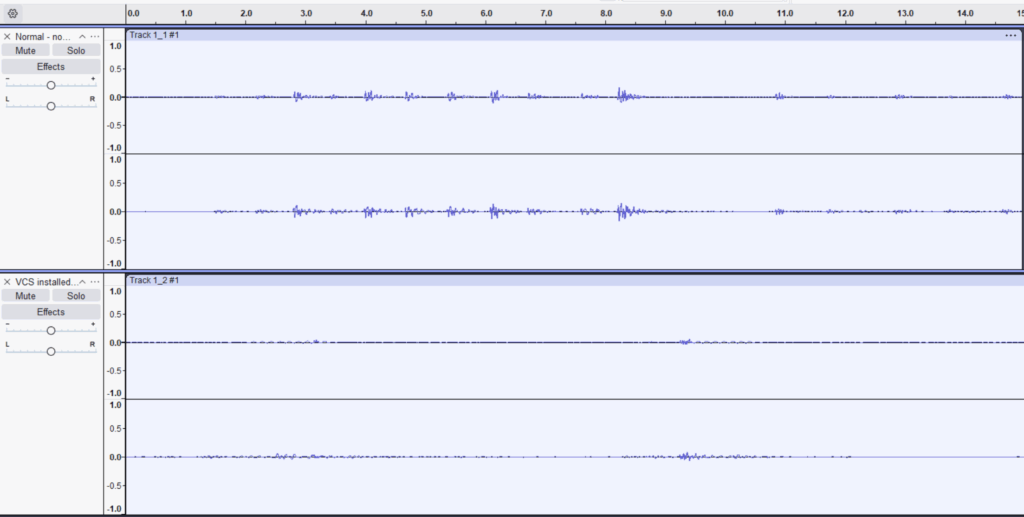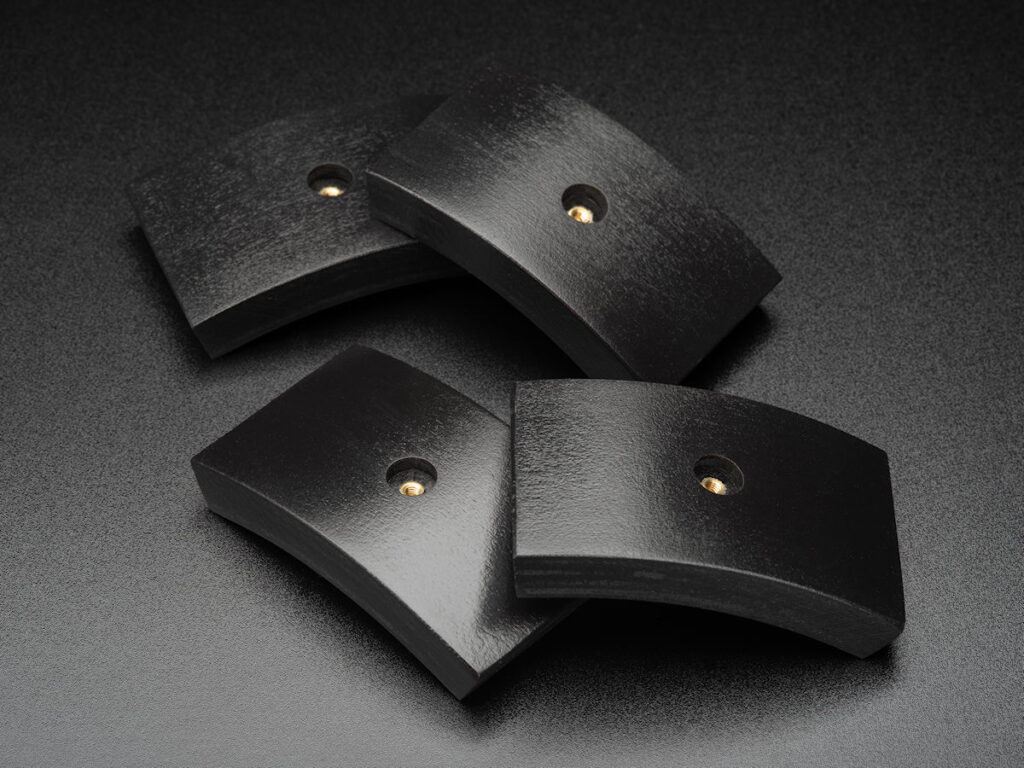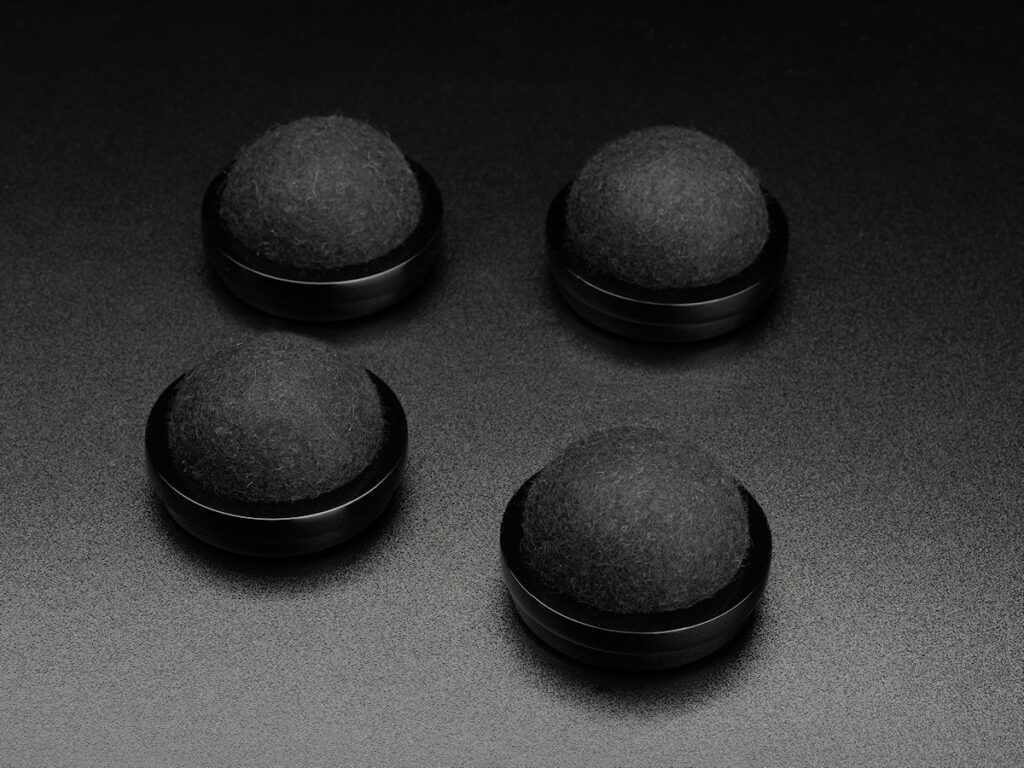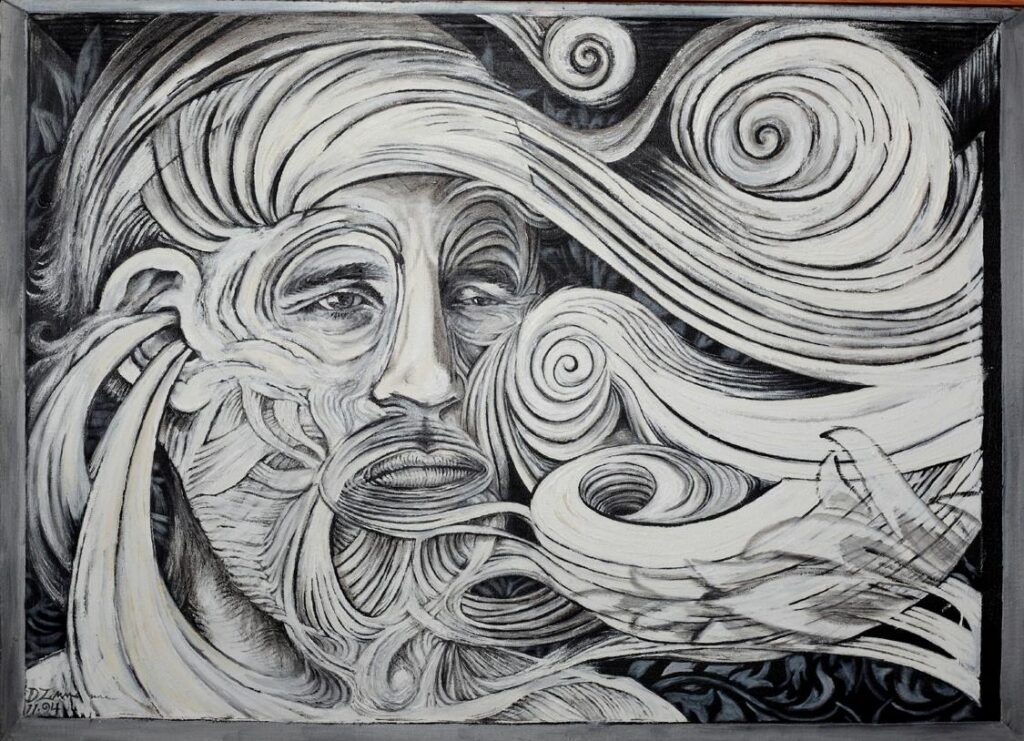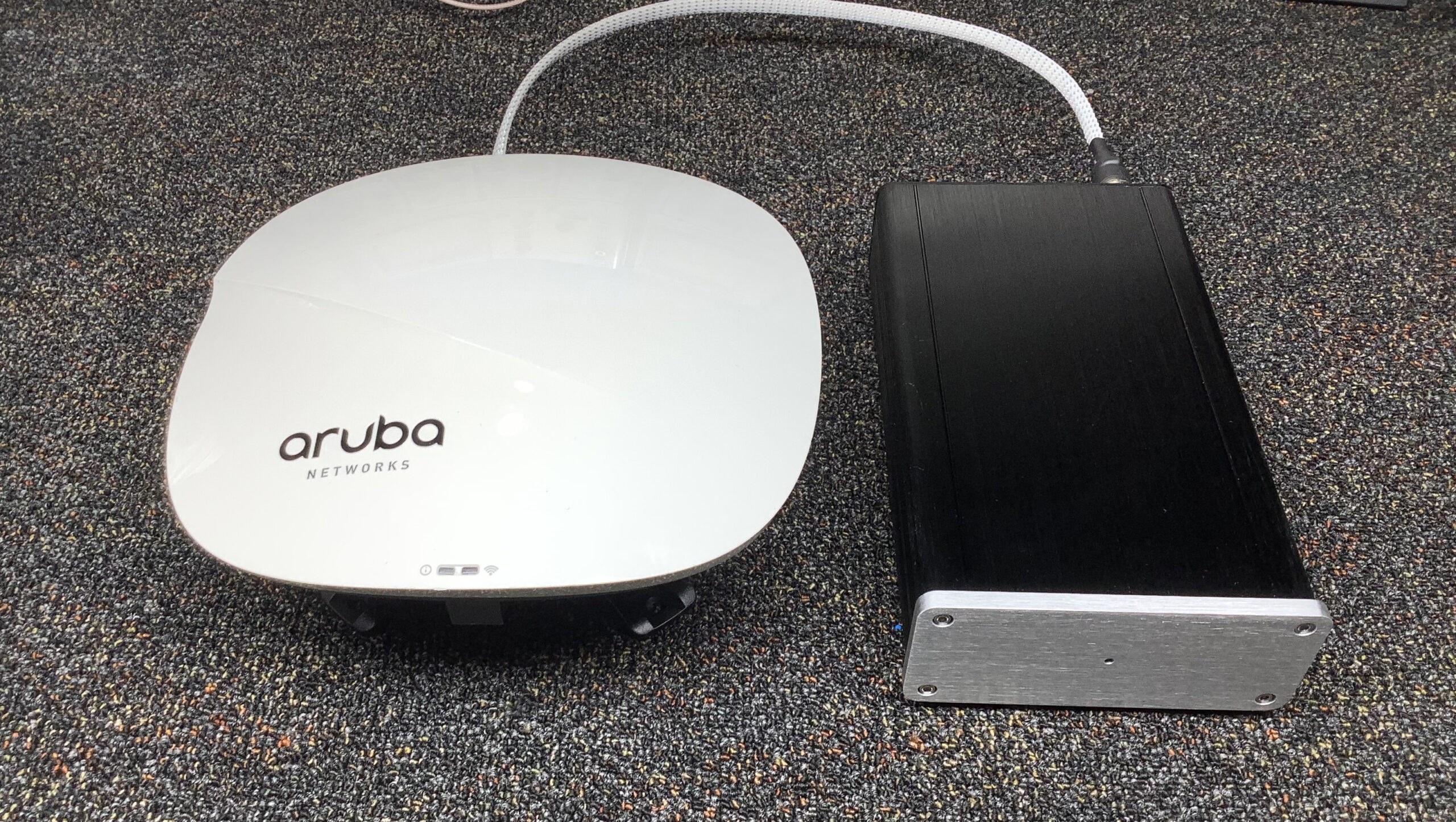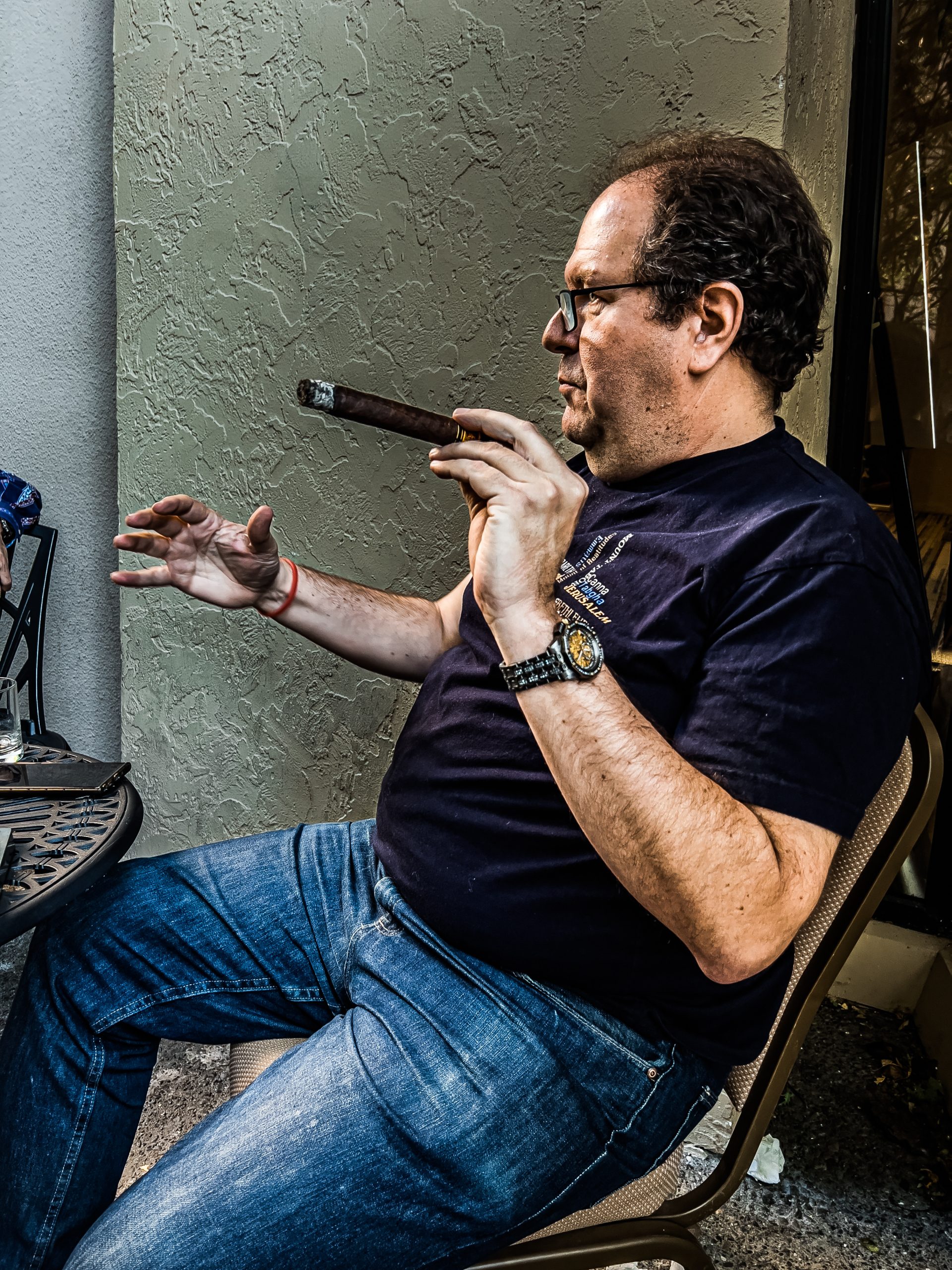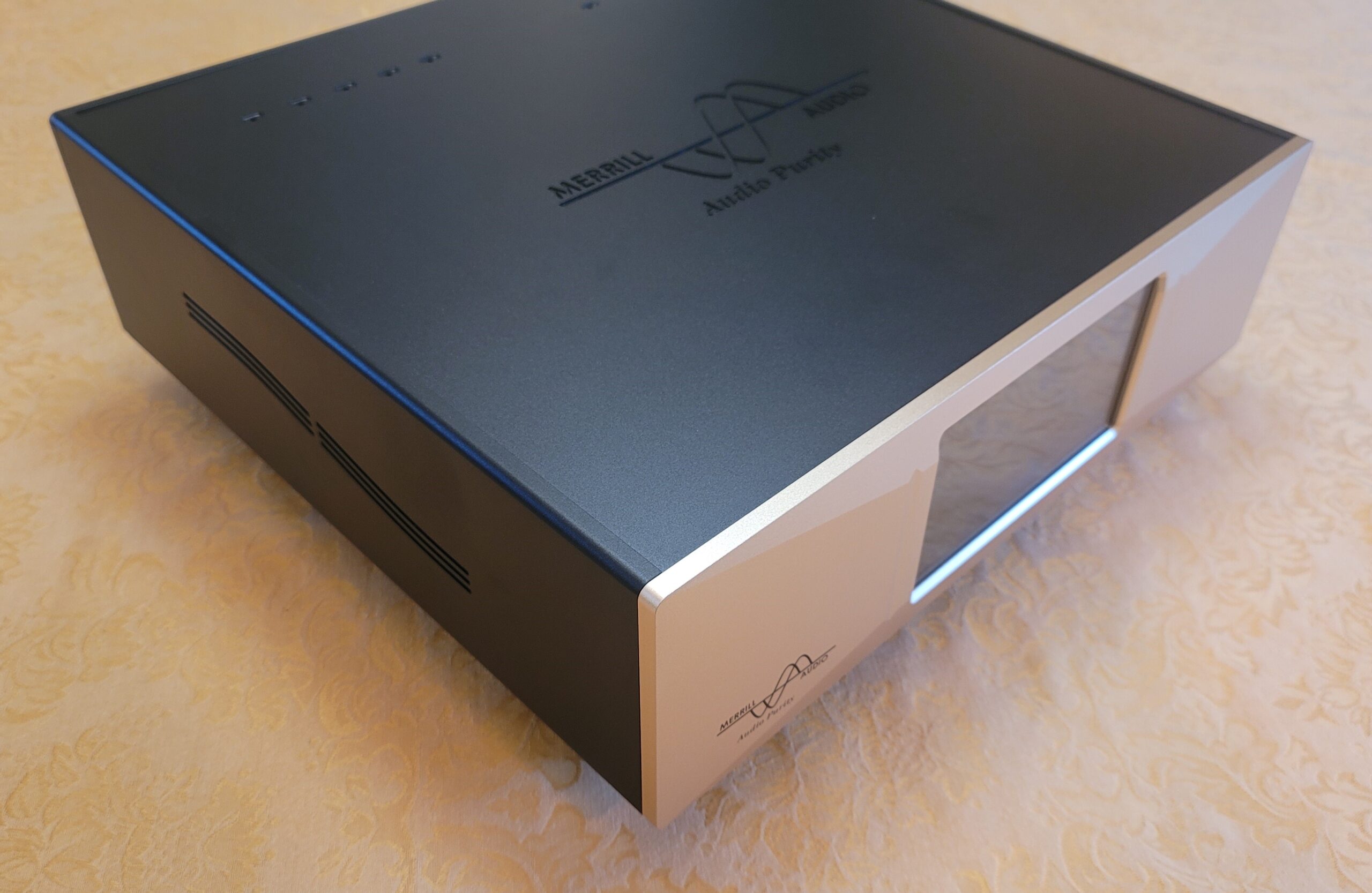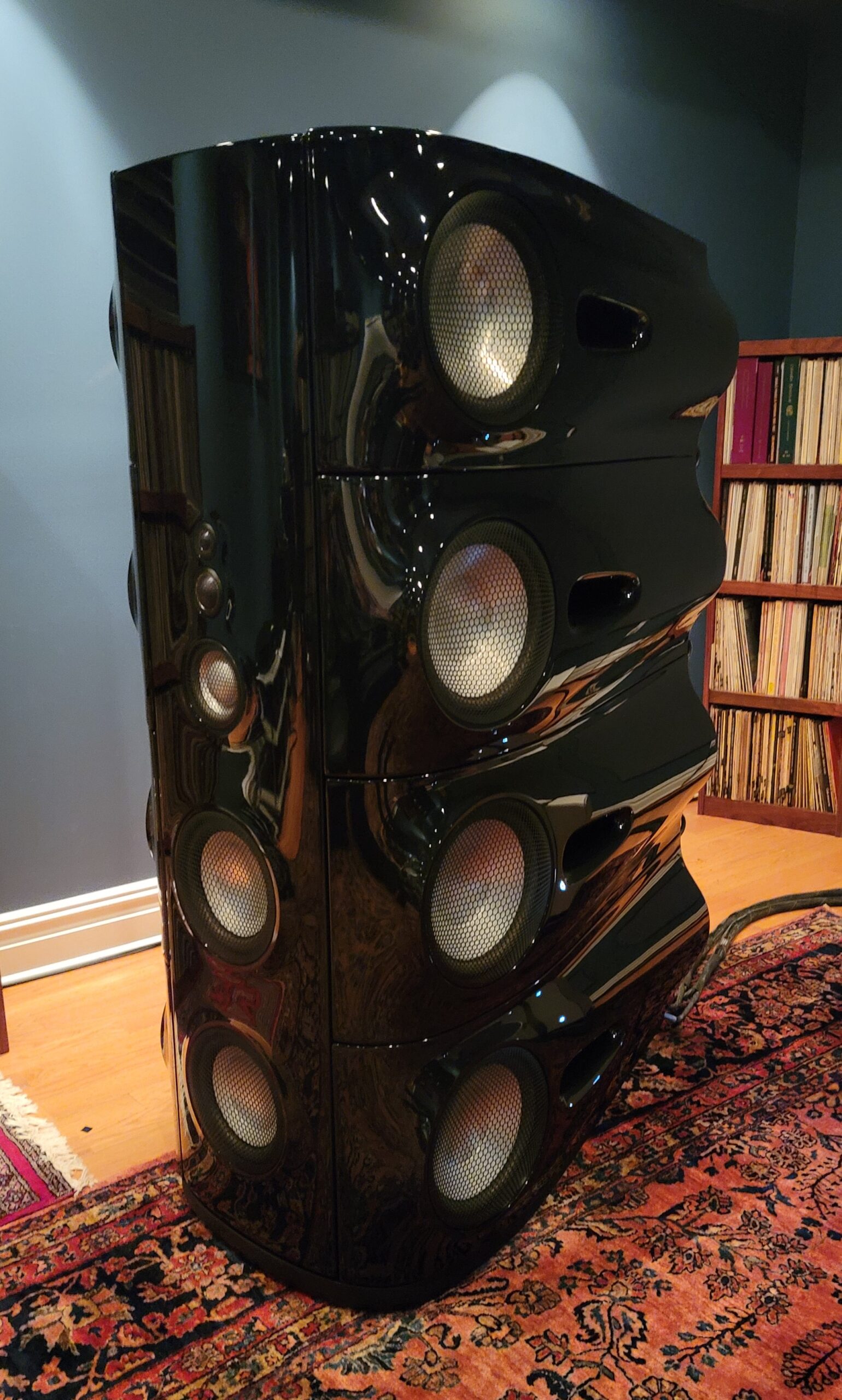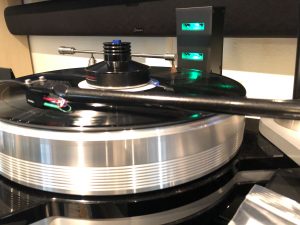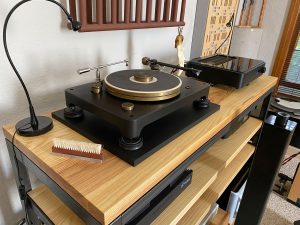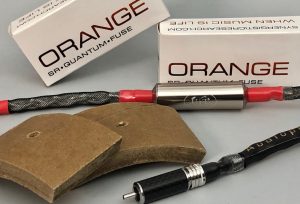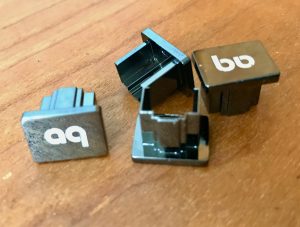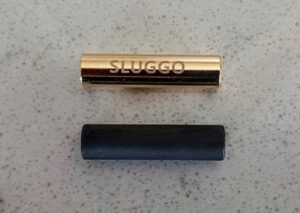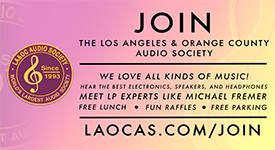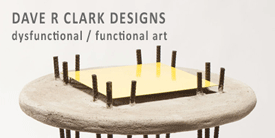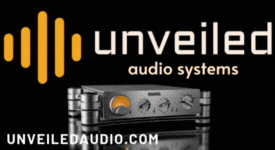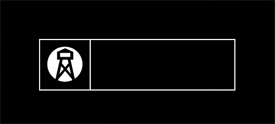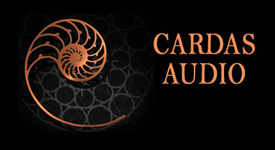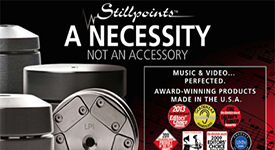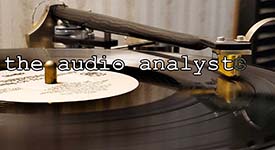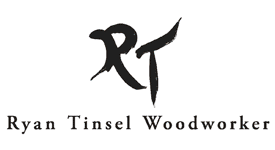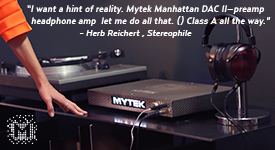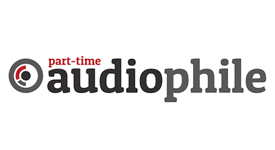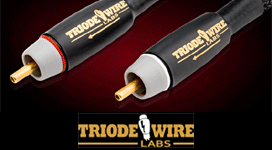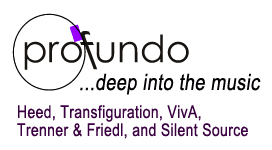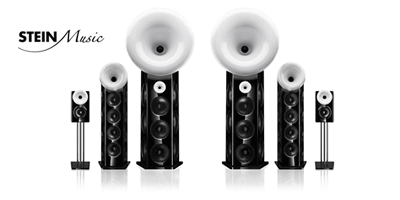The Maestro himself! (Portrait and image processing by David W. Robinson)
My LP life
When writing audio reviews, reviewers are often called on to describe things we readily hear that aren't always easily quantifiable. We use adjectives like 'open,' 'free,' 'effortless,' 'relaxed,' etc. The list goes on and on. Every once in a while, we get to review a product that not only makes a considerable difference in the sonic presentation of our gear, but is also quantifiable and can be easily measured. Such is the case with the Cloud 11 Vibration Control System from Gingko Audio.
But first, a little background….
I've been an LP record fan since I was a kid. I remember getting my first record player at about seven years old. It was one of those big metal all-in one units where the speakers folded out from the sides and the turntable flipped down from vertical to horizontal in the middle. If you were a child of the 60s and 70s, you'll know exactly what I'm talking about. Belt drive turntable with the 6" spindle in the middle and a 5(ish) disc changer. It had a ceramic cartridge that played 33s and 45s on one side and then you'd flip it to the other side for 78s. Sounded awful, but when you're seven years old, who cares? That was pretty much the genesis of my record collecting…..
I didn't get my first real turntable until I was in college, a Technics direct drive with the strobe and an adjustable tonearm with a removeable head-unit cartridge assembly. By my sophomore year in college, I probably had about 1000 LPs in the collection. I worked as a manager of a record store which helped my collection considerably. Plus, I was probably the only one who worked in the store that had an affinity for classical music, so all the classical cut-outs essentially ended up with me because no one else wanted them. It was certainly good to be the King. Anyway…
Much later in life I started digitizing my record collection(s). I've been doing it for years and I still do it to this day. I like to listen to my records on the go. While driving or as an airline passenger. Short of buying a 1956-esque Chrysler with the short lived "Highway HiFi" system, a (horrible) record player for cars, my option was to record my LP's originally to tape (back in the 80s), and then to WAV and FLAC formats later on. Someday I'll want to re-record them to DSD, but that's another article…..
Okay, back to the main story here…
So far I've digitized over 800 LPs from my collection and I've learned a few things in the process. When recording, the process entails hooking up the phono-level RCA outputs from the current turntable to an audio interface with built-in Class A preamps and then connecting the interface to a laptop running Audacity. Recording is done from the LP into a FLAC file via Audacity. This is the first of many subsequent steps including trimming, cutting into tracks, embedding artwork, setting the file tags, and a bit of clean-up including restoring a touch of the appropriate EQ curve (mainly RIAA for post 1952 recordings, etc..)
One of the biggest bugaboos that I discovered early on was the problem of vibration. Not so much the vibration of the needle on the vinyl, but from vibrations affecting the turntable from the outside world.
This is a bigger issue than you'd probably imagine.
Any (and I do mean any) vibrations from the outside world get carried over directly to the signal being generated by the stylus running inside the groove. Mostly this goes unnoticed because at the same time the vibration is affecting the playback, it is also being 'heard' naturally, and to an extent masks the sound. The footsteps you hear as you walk across the room while the record is playing are also being amplified and played through the speakers. But since the footsteps are happening in roughly the same place (in the same room), the reproduction of those footsteps through the audio playback is generally not perceived by the listener.
Now if you were to put the speakers and the listener in another room and then have someone walk near the turntable, the listener in the other room would hear it instantly. This is a huge problem when making recordings of records on a turntable. Other vibrations such as air-conditioners, appliances, and refrigerators are also picked up. When making the digital recordings, these vibrations go by without notice—until the recording is played back. Everything in the room that you heard and ignored is right there in the recording.
As a result, I'd been relegated to recording to digital in the middle of the night, when all the appliances were off and the house was at its most quiet. Once I'd start a recording and drop the stylus, I'd leave the room until the recording was complete. Then I'd flip the record and do it again.
"Tone Quixote." Drawing by Bruce Walker.
Of course I've tried all the home remedies to try to correct this. Folded up towels under the turntable, sponges under the corners, small pillows, you name it, and chances are I've tried it. None of it worked very well if at all. The problem was either the turntable was too heavy, and the material underneath would just get compressed as far as it would go and the underlying vibrations would simply carry through the material. Or the turntable was too light, and it would just rest on top with the same problem. I've known for years that what was really needed was a way to 'float' the turntable on an adjustable setup that was neither too stiff nor too soft. A system that could be adjusted to just the right buoyancy (for lack of a better word here) that would allow the turntable to rest into the underlying absorber at just the right amount of weight to mass ratio so that the absorbing material could absorb vibrations from one side (either the turntable or the underlying furniture) and then dissipate that energy instead of transferring it to the other side. Never been able to find such a unicorn.
Until now...
Enter Gingko Audio
When first opening the Cloud 11 Vibration Control Platform system, I discovered three basic components: The base which is a solid flat surface with indents on the top side into which are inserted the next item, the load carrying balance balls. There are two types; a set of rubber-like green balls that loosely resemble racquetballs—and set of larger white semi-soft balls that look like a cross between oversized cotton balls and tennis balls. The last component is the cover that sits on top of the base and balls combo onto which you place the turntable.
After unboxing, the next step is to see which configuration option works best for a particular setup. I spent the next hour trying different configurations, swapping between the white and green balance balls, trying different quantities of each, and trying different layout configurations on the base. For me I found the best results with six green balls on the base spaced out in a symmetrical pattern.
Base with six vibration absorber balls. This was the best setup for my setup. Notice there is room forfour more for heavier weight loading.
Same setup, but with the larger (and a bit softer) white balls. This configuration also worked well.
White or green. Up to 10 are supported on the platform base.
The take-away here is that the system is configurable and doesn't try to be a one-size-fits-all. That's the magic and the genius of the product. If I handed a single vibration control plat form to 10 different people, the results would be too varied amongst them to be deemed useful. To work in any given environment, the system needs to be tunable and that is exactly what is offered here. By changing the layout, type, and quantity of the underlying absorbers, a perfect fit can be achieved that will work exceedingly well regardless of what you're placing on the surface.
Turntable resting on the Cloud 11 system. Elegant and functional.
Once set up, the sound coming from the turntable was instantly and noticeably improved. And it was easy to show that it wasn't simply confirmation bias. Since I'm digitizing records all the time, I'm used to visually seeing what's coming out of the turntable via the recording screen in Audacity with each track being recorded. The results visually confirmed what I was hearing. So, I setup a simple test…
Ginkgo Audio has a wonderful, detailed video demonstrating the effectiveness of the Vibration Control System which involves placing transducers on table surface adjacent to the Cloud Platform and showing the reduction in vibrations using the product. (direct link HERE)
My test was much simpler and perhaps even a little more straightforward. For my testing, I placed the closest LP I had handy on to the turntable surface, powered on the turntable but did not engage the turntable motor. The turntable platter remained stationary. I placed the stylus on the LP and then started recording. What gets recorded in this instance are any vibrations picked up by the stylus plus the baseline noise floor of the electronics in the turntable and recording interface. Then I walk around the room.
Without the Cloud system in place, I can see clear as day the footsteps (we like the term 'footfall' in audio-speak) being picked up by the stylus. The turntable sits on a wooden credenza which sits on an LVT floor on the 2nd floor of a 3-story house. The house was built in 1996 and is a traditional slab and wood frame, sheet-rock style construction. Nothing out of the ordinary for the time. But without a doubt when someone walks on a floor, vibrations are created and those vibrations are carried to any nearby appliance, item of furniture or, in this case, a turntable sitting on an item of furniture.
Okay, now for the same test with the Cloud 11 system.
The difference is huge. The base-line circuit noise level remains consistent, as expected. The ambient background vibrations and more importantly the footfalls were drastically reduced. Not by a little. By orders of magnitude. Interestingly, it was this same setup and retesting that allowed me to find the sweet spot in the setup configuration for the Cloud 11. Each time I changed the configuration (number, type, and placement of the vibration balls), I would do another test and look at the results. This allowed me to precisely tune the system for my setup. Here's how it looked when I was satisfied with the configuration:
At the top half of the image, you see the left and right channels of the signal from the stylus on the LP as I'm walking around the room. Each footstep (footfall if you prefer) is shown on both channels. The step just after the 8 second mark is me lifting my heels off the floor and thumping them down. Had the record been turning on the platform, this might very well cause a skip.
The bottom half of the image is the exact same setup and test with the Cloud 11 Vibration Control platform installed. The normal footsteps are nearly non-existent while the final heels-up 'thump' (just after the 9 second mark) registers with less force than a regular footstep without the Cloud installed.
I was stunned. Gob smacked at the difference. I had assumed there would be 'some' improvement. I was not prepared for this. It's one of those moments where you try something for the first time and instantly know you can't go without it. It's really refreshing when the eyes can clearly support what the ears are experiencing, which is exactly what is happening here. For me, I've (finally?) come to realize that having vibration mitigation is a necessity. Good thing we're never too old to learn!
Gingko Audio makes more than just turntable vibration control solutions. I'm also evaluating their "Acoustic Resonance Clarifiers," a somewhat lofty name for specially designed arches that are placed underneath speakers or other equipment. The arches, as one would expect, absorb and dissipate vibrations coming from the equipment placed on them. They also separate vibrations coming from underneath (the floor or cabinet) from the equipment placed above. Currently I have two sets of four of these. One set is employed under each speaker (right now, the Axxess L3 from Audio Group Denmark).
Nothing earth-shattering, but they do work. I've always been a fan of minimizing contact as much as practical between speakers and the floor, especially if the floor is not first floor supported by a concrete slab. In my case, the speakers are on the same floor as everything else (2nd floor), so anything that reduces vibrations is a good thing.
I'd make these a requirement for anyone living in a multi-story apartment building! Your downstairs neighbors will thank you!
Equipment and Speaker ARCH (image courtesy of Gingko Audio)
Lastly, I've set up a set of Gingko's Cloud22 small bases under the integrated DAC/Streamer/Amp (Axxess Forté3, also from Audio Group Denmark). These vibration isolators are made from the same type of material as the white isolation balls that can be used with the Cloud 11 platform. They have a steady base and are painted black so as not to stick out visually. All in all, it's nice to have a cohesive set of products from a single supplier that takes a holistic approach to dealing with the challenges of vibration. The entire suite of meticulously designed solutions for vibration challenges is impressive, and certainly worth consideration.
Cloud22 with the Acrylic base for components (image courtesy of Gingko Audio)
Summing it up...
I'll leave with this. I've discovered that there are two types of LP enthusiasts; those that have a system in place to handle vibrations, and those that need them.
As for me, I'm sold.
Ginkgo Audio Cloud 11
Retail: $599 - $799 (depending on size)
Ginkgo Audio Equipment and Speaker ARCH
Retail: $159 - $209
Ginkgo Audio Cloud22 Base
Retail: $119 - $199
Gingko Audio
Be sure to review the information presented on the Technology section of their website:
https://www.ginkgoaudio.com/vibration-control-solutions-a-holistic-approach/
Equipment list used for this review: (borrowed items are in bold)
- Gingko Audio Cloud 11 Vibration Control System (turntable)
- Gingko Audio Speaker ARCH (speakers)
- Gingko Audio Cloud22 isolators (DAC/Streamer/Amp.)
- Dejitter It Switch X and Dejitter It WiFi X
- Axxess L3 loudspeakers from Audio Group Denmark
- Axxess Forté3 from Audio Group Denmark
- Cardas Clear Beyond Power Cables (NEMA 5-15P to C19)
- Kubala-Sosna Realization Series speaker cables
- RSX Technologies Benchmark Series Interconnect cables
- Sony UBP-X800M2 CD/SACD transport
- Asustor FS6712X SSD NAS
- Windows™ PC with Audirvāna – DSD/PCM streaming server
- Audio-Technica AT-LP120XUSB turntable
- PS Audio PowerPlant P15 power regenerator
Photographs by Dean Waters, except as noted.
Drawings by Bruce Walker and Dan Zimmerman.

